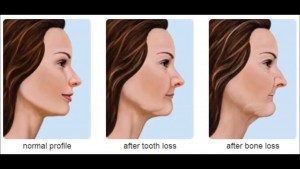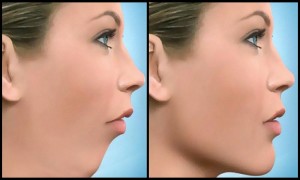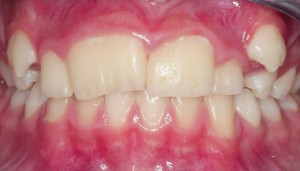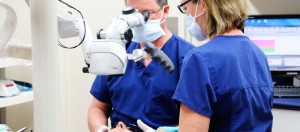Gummy Smile – Causes & Treatments
When you smile, do you feel the appearance of your upper teeth is overshadowed by excessive gum tissue? Are you of the opinion that your upper teeth appear too short compared to the amount of gingival tissue displayed when you smile? If you answered “yes” to either of these questions, you may have a condition that is commonly called a “gummy smile” or excessive gingival display.
Gummy smile can have a negative affect on the esthetics of your smile. The good news is that a gummy smile can be corrected through various treatment options.
Causes
- An excessive display of gum tissue in your upper jaw can result from the abnormal eruption of the teeth. Teeth covered by excessive gum tissue appear short, even though they may actually be the proper length.
- The muscle that controls the movement of your upper lip could be hyperactive, causing your upper lip to rise up higher than normal. When this occurs, more of your gum tissue is exposed when you smile.
- The manner in which your upper jaw bone grew and developed could cause the appearance of a gummy smile. For instance, if there was an excessive bulging protrusion of the upper jaw within the gum tissue, you would experience an obvious gummy appearance when you smile.
Treatments
If you think you have a gummy smile, visit your dentist for confirmation and treatment options. Your dentist will examine your mouth, teeth and gums to determine the extent of the excessive gingival display and any possible causes. This examination may involve conventional and/or digital impressions of your teeth and gums. You may also need X-ray imaging so that the tooth roots and jaw bone can be carefully examined.
Your dentist may refer you to a specialist, like a periodontist, orthodontist or an oral surgeon. Depending on the nature of your specific clinical condition, treatment could include one or more of the following:
- Same-day laser treatments (in minor cases).
- Surgical lip repositioning.
- Orthodontics (braces) to move the teeth into more suitable positions.
- Surgical Sculpting of the gingival tissues and bone to create healthier and more attractive looking gum contours.
- Maxillofacial surgery to reposition the bone.
For example, according to the American Academy of Periodontology, a periodontist – a dentist specializing in the gums, soft tissues and other structures supporting the teeth – can perform a “crown lengthening” procedure to correct the appearance of a gummy smile. During this procedure, the periodontist will remove the excess gum tissue – and possibly bone – in order to expose more of the tooth’s surface. This Surgical Sculpting procedure can be performed on one or more teeth to create an even gum line or a more natural looking smile.




























